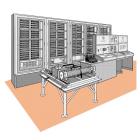In 1935 Konrad Zuse began working for the Henschel Flugzeugwerke, an arms manufacturer for Nazi Germany, in Berlin-Schönefeld, where he developed the Z3 and Z4 electromechanical computers. Although Zuse was not a member of the Nazi Party, some of its high-ranking members supported and financed his work.
Technical innovations are not always neutral and are often tied to political, economic, and social developments. Because technological innovations often serve more than one purpose, these can result in unforeseen side effects. It is important to carefully consider the long-term consequences of technological development on complex systems such as the climate, the Earth, or humans before implementing them.
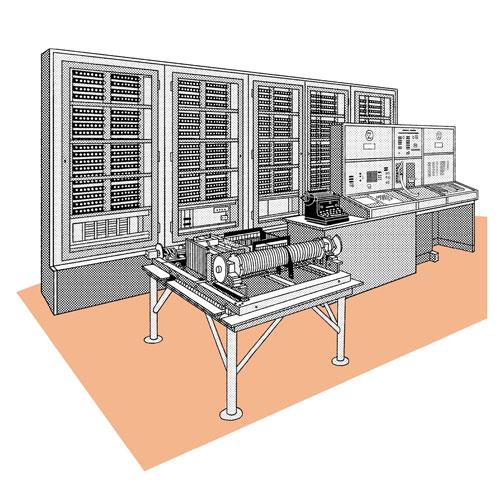
Zuse Z4 by Konrad Zuse, Inv.-Nr.: 1960/74692
Benedikt Rohlmann
Zuse Z4 by Konrad Zuse, Inv.-Nr.: 1960/74692
Benedikt Rohlmann
Drawn by Benedikt Rohlmann , 2014.  This work is licensed under a Creative Commons Attribution-NonCommercial-NoDerivatives 4.0 International License.
This work is licensed under a Creative Commons Attribution-NonCommercial-NoDerivatives 4.0 International License.
Zuse Z4
Text and images by Benedikt Rohlmann
University of the Arts (UdK), Berlin
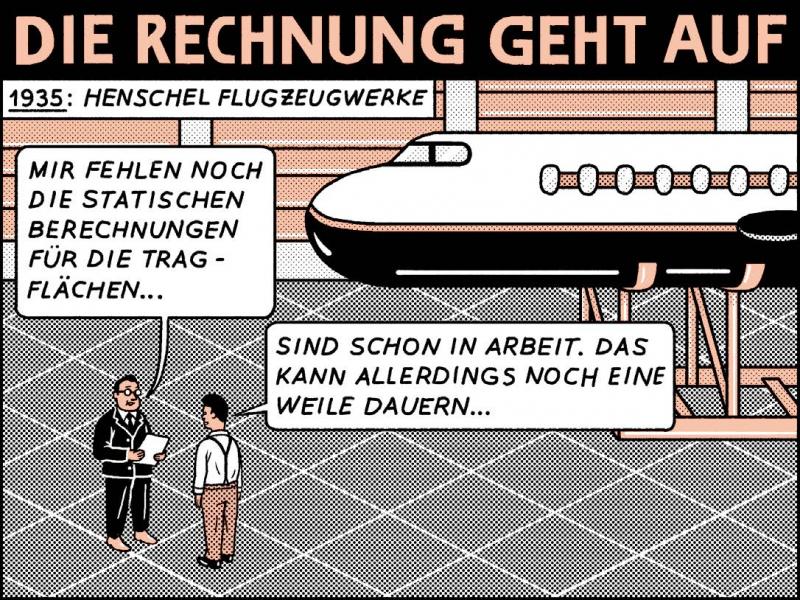
It all works out
1935: Henschel Flugzeugwerke
“I still need the statistical calculations for the wings…”
“We’re working on it. But it will take a while…”
It all works out
1935: Henschel Flugzeugwerke
“I still need the statistical calculations for the wings…”
“We’re working on it. But it will take a while…”
Drawn by Benedikt Rohlmann , 2014.  This work is licensed under a Creative Commons Attribution-NonCommercial-NoDerivatives 4.0 International License.
This work is licensed under a Creative Commons Attribution-NonCommercial-NoDerivatives 4.0 International License.
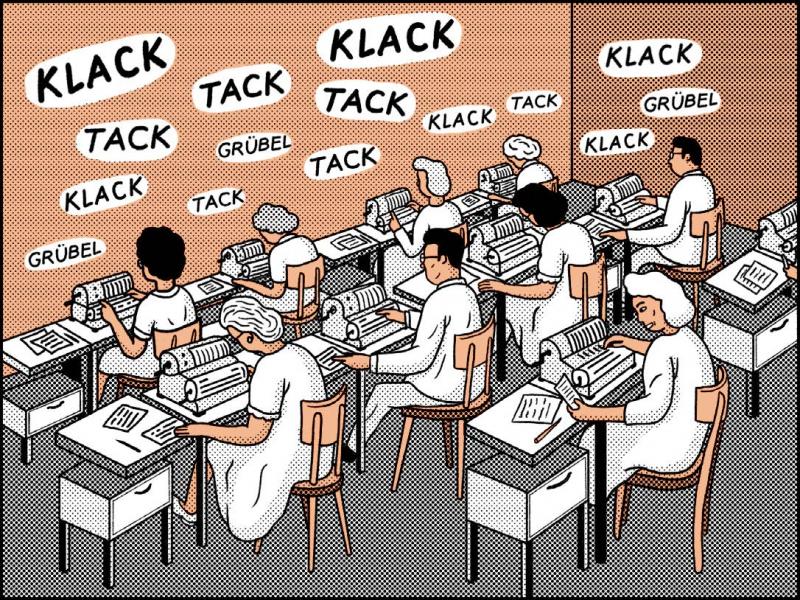
Drawn by Benedikt Rohlmann , 2014.  This work is licensed under a Creative Commons Attribution-NonCommercial-NoDerivatives 4.0 International License.
This work is licensed under a Creative Commons Attribution-NonCommercial-NoDerivatives 4.0 International License.

‘These eternally repetitive calculations are such a waste of time! This should be done by a machine…’
‘These eternally repetitive calculations are such a waste of time! This should be done by a machine…’
Drawn by Benedikt Rohlmann , 2014.  This work is licensed under a Creative Commons Attribution-NonCommercial-NoDerivatives 4.0 International License.
This work is licensed under a Creative Commons Attribution-NonCommercial-NoDerivatives 4.0 International License.
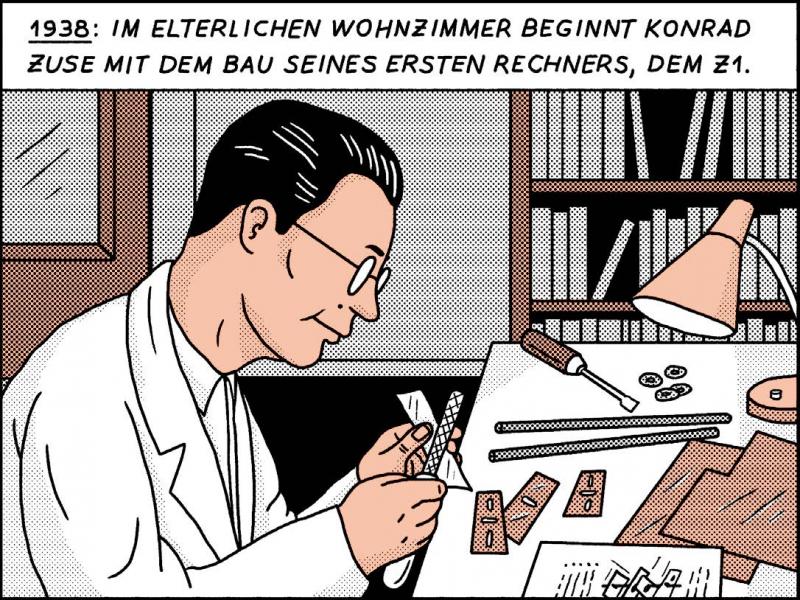
1938: In his parents’ living room, Konrad Zuse is working on the construction of his first computer, the Z1.
1938: In his parents’ living room, Konrad Zuse is working on the construction of his first computer, the Z1.
Drawn by Benedikt Rohlmann , 2014.  This work is licensed under a Creative Commons Attribution-NonCommercial-NoDerivatives 4.0 International License.
This work is licensed under a Creative Commons Attribution-NonCommercial-NoDerivatives 4.0 International License.

1939: Completion of the Z2. It functions with 200 electromagnetic relays and can perform basic arithmetic.
1939: Completion of the Z2. It functions with 200 electromagnetic relays and can perform basic arithmetic.
Drawn by Benedikt Rohlmann , 2014.  This work is licensed under a Creative Commons Attribution-NonCommercial-NoDerivatives 4.0 International License.
This work is licensed under a Creative Commons Attribution-NonCommercial-NoDerivatives 4.0 International License.
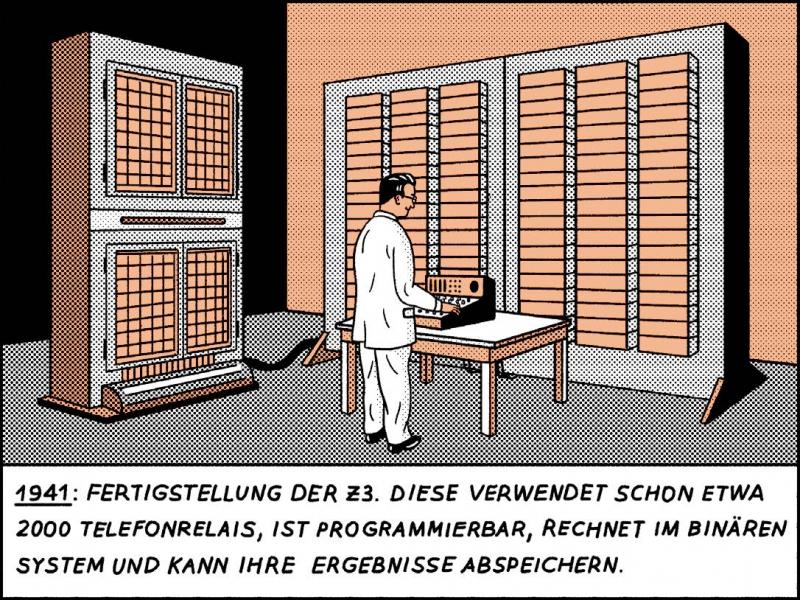
1941: Completion of the Z3. It uses around 2,000 telephone relays, is programmable, calculates in the binary system, and can store results.
1941: Completion of the Z3. It uses around 2,000 telephone relays, is programmable, calculates in the binary system, and can store results.
Drawn by Benedikt Rohlmann , 2014.  This work is licensed under a Creative Commons Attribution-NonCommercial-NoDerivatives 4.0 International License.
This work is licensed under a Creative Commons Attribution-NonCommercial-NoDerivatives 4.0 International License.
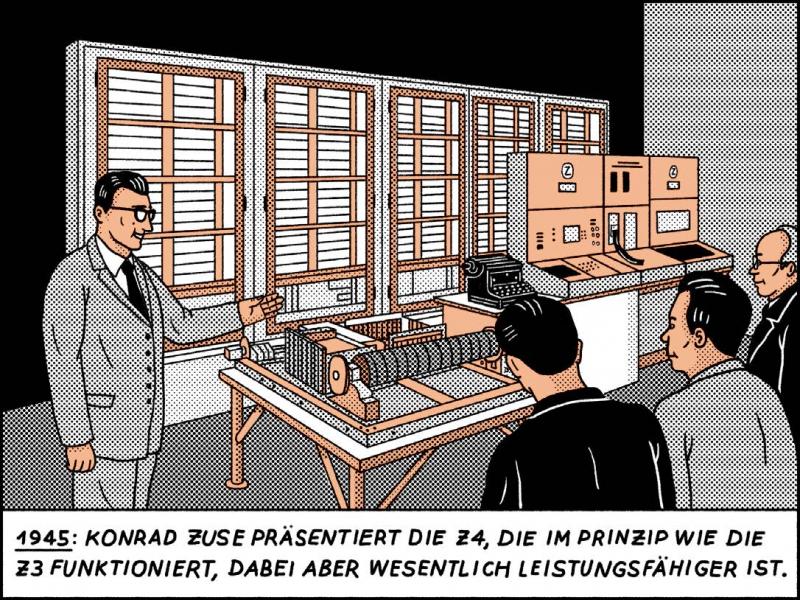
1945: Konrad Zuse presents the Z4, which operates technically like the Z3, but is substantially more efficient.
1945: Konrad Zuse presents the Z4, which operates technically like the Z3, but is substantially more efficient.
Drawn by Benedikt Rohlmann , 2014.  This work is licensed under a Creative Commons Attribution-NonCommercial-NoDerivatives 4.0 International License.
This work is licensed under a Creative Commons Attribution-NonCommercial-NoDerivatives 4.0 International License.

2014: “My computer is already a million times stronger than the Z4. What will it be like in another 70 years?”
2014: “My computer is already a million times stronger than the Z4. What will it be like in another 70 years?”
Drawn by Benedikt Rohlmann , 2014.  This work is licensed under a Creative Commons Attribution-NonCommercial-NoDerivatives 4.0 International License.
This work is licensed under a Creative Commons Attribution-NonCommercial-NoDerivatives 4.0 International License.
Author’s commets
My father is a computer scientist, so we have had a computer at home for as long as I can remember. He told me about Konrad Zuse’s first giant computer that filled an entire room. Due to my earlier fascination and because it is impossible to imagine my life today without a computer, I was especially interested in researching on this topic and found it a useful and educational exercise.
How to cite
Rohlmann, Benedikt. “Zuse Z4.” Environment & Society Portal, Multimedia Library, 2014. http://www.environmentandsociety.org/node/6647/.
The comic also appears in Alexandra Hamann, Reinhold Leinfelder, Helmuth Trischler, and Henning Wagenbreth, eds., Anthropozän – 30 Meilensteine auf dem Weg in ein neues Erdzeitalter. Eine Comic-Anthologie (Munich: Deutsches Museum, 2014).
This work is licensed under a Creative Commons Attribution-NonCommercial-NoDerivatives 4.0 International License.


